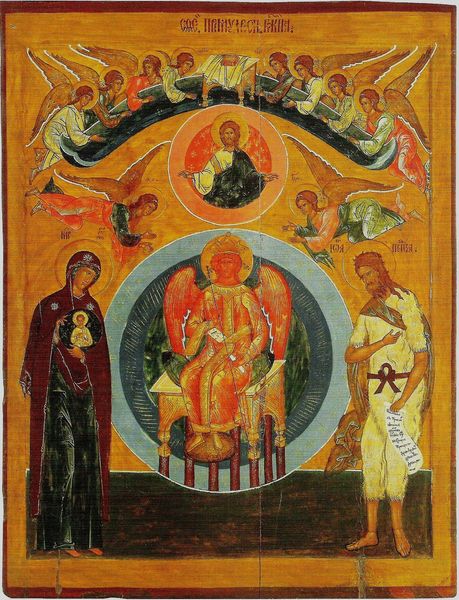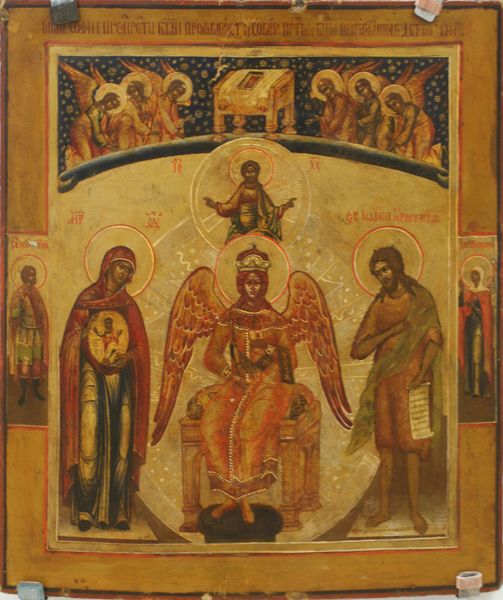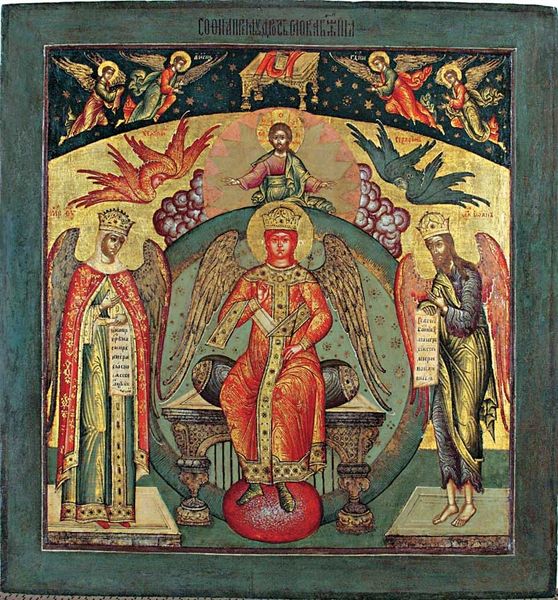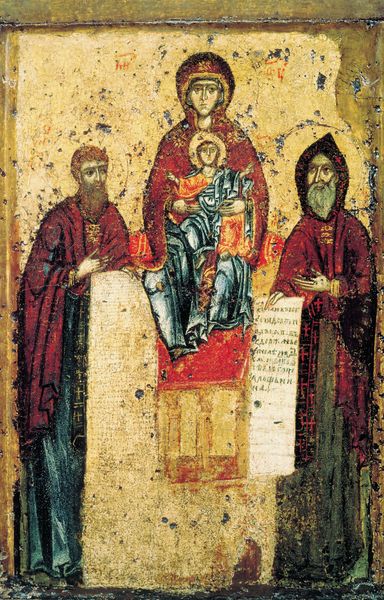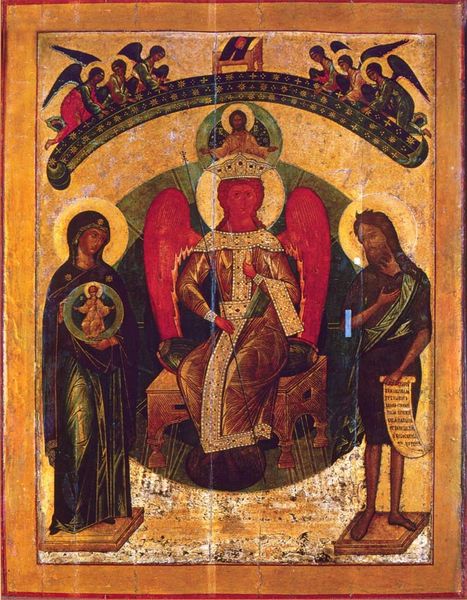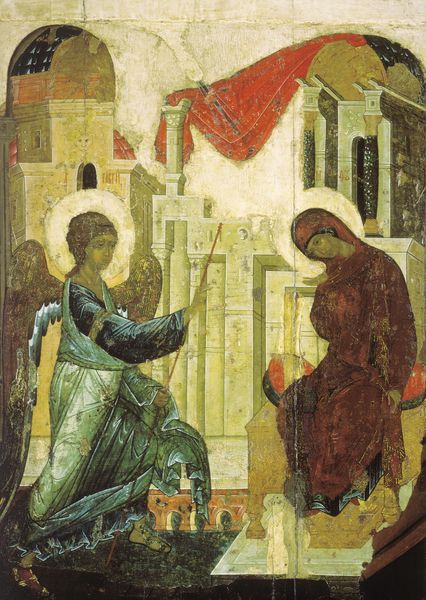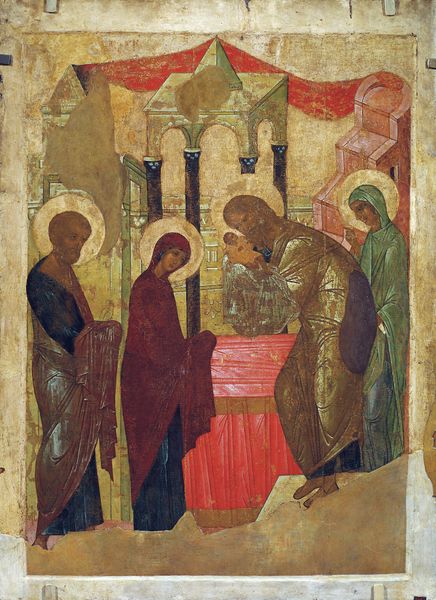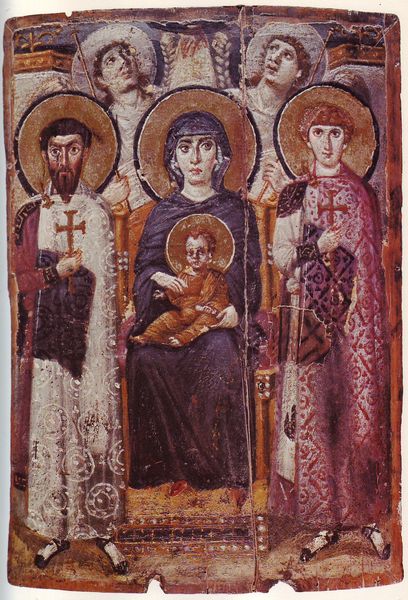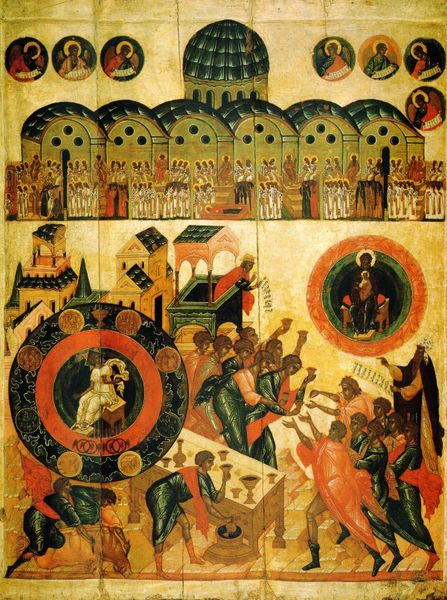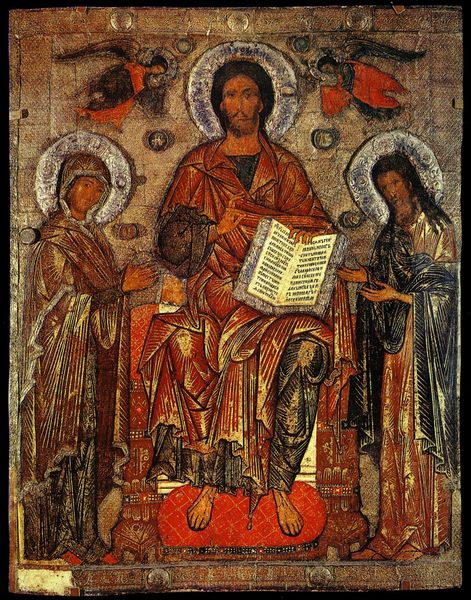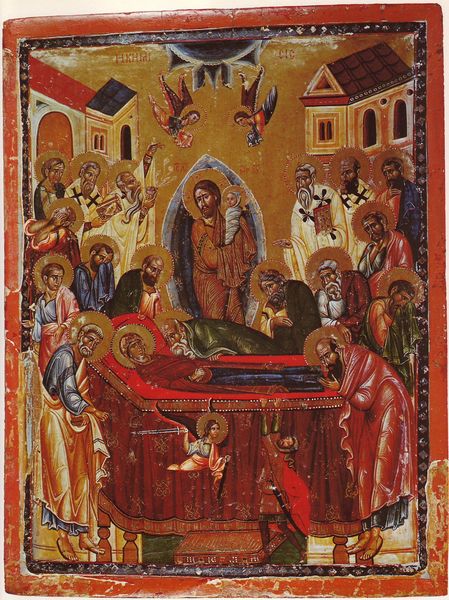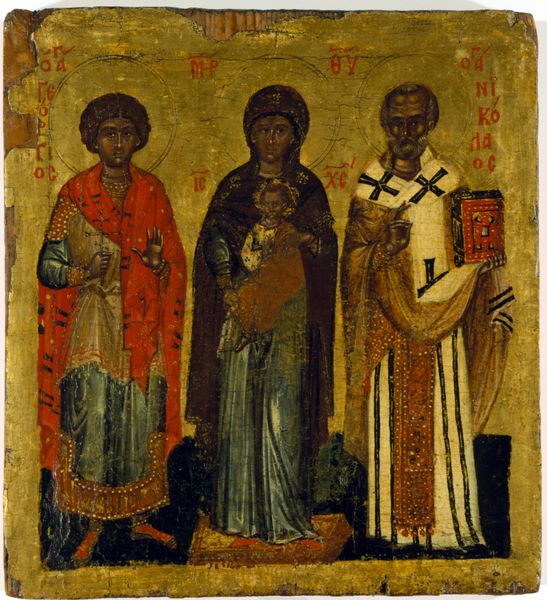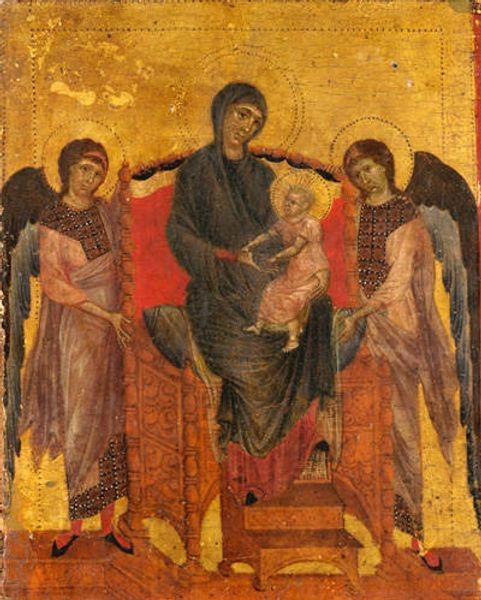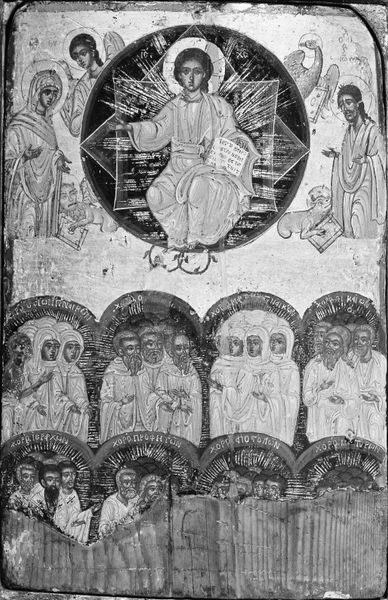
drawing, ink
#
drawing
#
byzantine-art
#
ink
#
geometric
#
christianity
#
line
#
christ
Copyright: Public domain
Curator: Let’s discuss "Throne of the Invisible God" rendered in 1914 by Nicholas Roerich. He used ink and drawing, achieving something evocative of Byzantine iconography. My first impression is the rigid composition of angels bearing candles and geometric elements makes me feel small and somehow prepared. Editor: Small? Yes, it's almost oppressive, a cascade of imagery, particularly considering the probable materials – ink likely applied with painstaking precision, repeated rendering to imply multitudes. The labor embedded within this drawing—even if scaled down to drawing—suggests devotional work. The use of geometric patterns, likely carefully considered within a visual system for conveying a specific effect adds to the impact. Curator: The symbolism is heavy, absolutely. We see the Byzantine artistic roots in the throne, halos, and even the way the robes are draped and shaded. The Christ figure is subtly there and emphasized by the symmetry—we feel its presence without seeing it fully. Those geometric elements represent transcendence to me, and their repetition evokes a sense of deep time. The black color hints mourning for Jesus, as a prayer of salvation and the circle. Editor: It speaks of artistic choices rooted in materiality; the cost of materials and artistic skills to transmit symbols to masses unreached by reading and text, for instance, played into that visual encoding as the price of distribution of art would increase with use of more colors for each image and printing techniques were not common. Curator: And what’s striking about the fact it’s “destroyed,” that artwork cannot physically communicate any more to an audience, especially after thinking about labor input by the original artisan? Editor: The iconoclastic sentiment perhaps, and its fragility speaks about of the role art assumes within a set of human and social contexts of material reality and value exchange and artistic labor of creation which, however spiritual, are embedded and impacted. An object that could be destroyed—the very precarious nature of existence—makes its visual language all the more potent, reminding us it communicates through symbolism of both religious and socioeconomic orders that are not visible within imagery alone. Curator: A poignant paradox—the throne of the invisible god exists only in the visible record of the lost materials, reminding us of mortality. Editor: Precisely; labor, visual strategies, symbolism, are always materially entangled to each other.
Comments
No comments
Be the first to comment and join the conversation on the ultimate creative platform.
